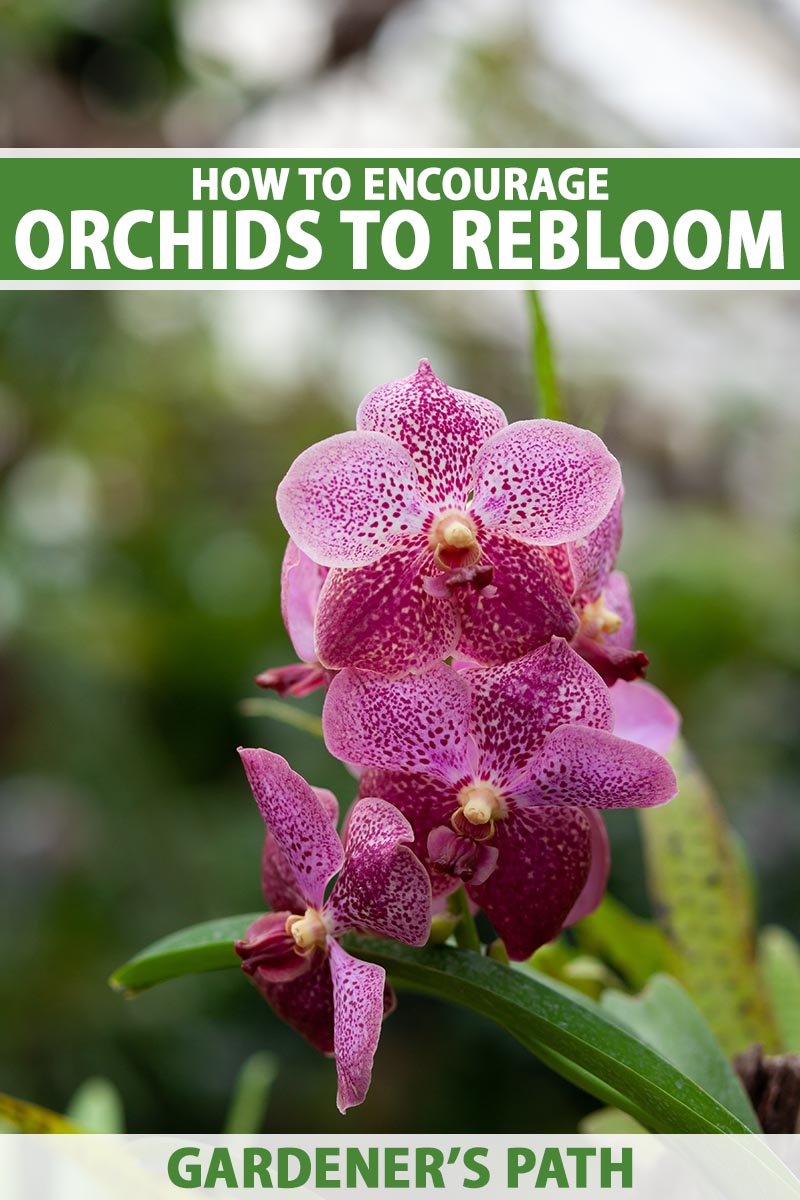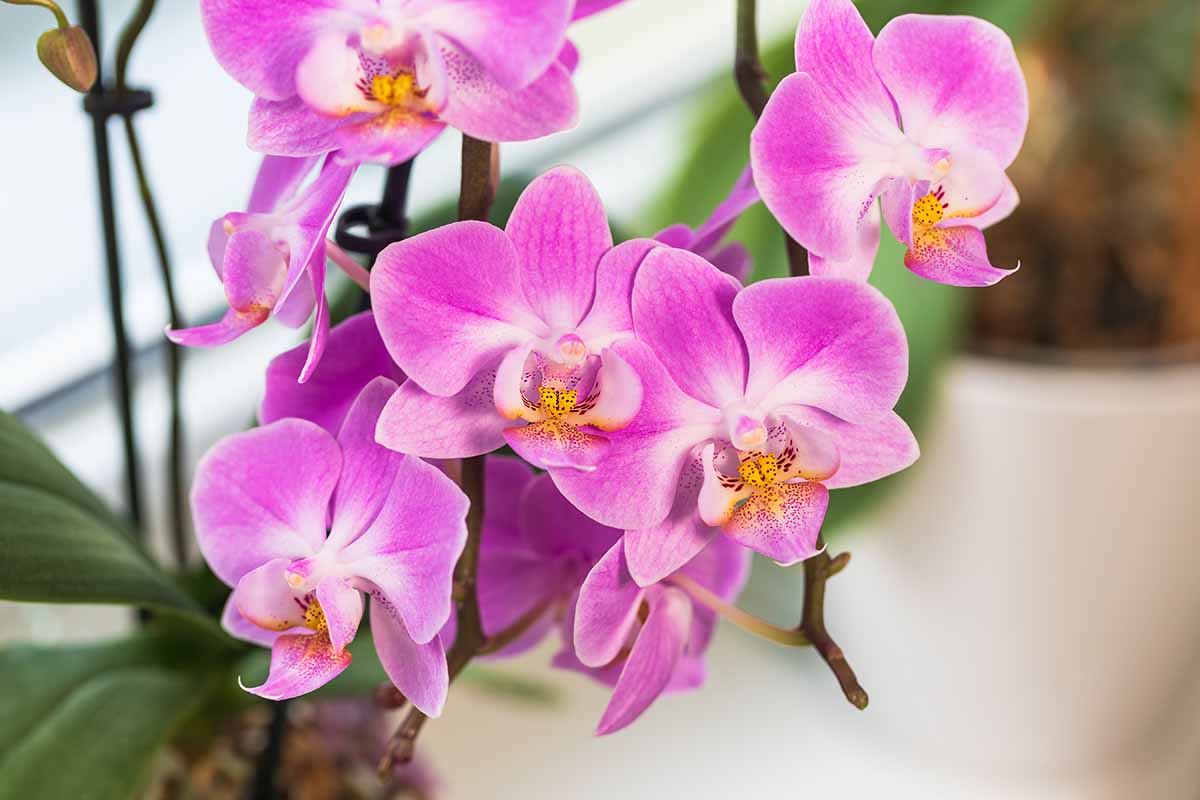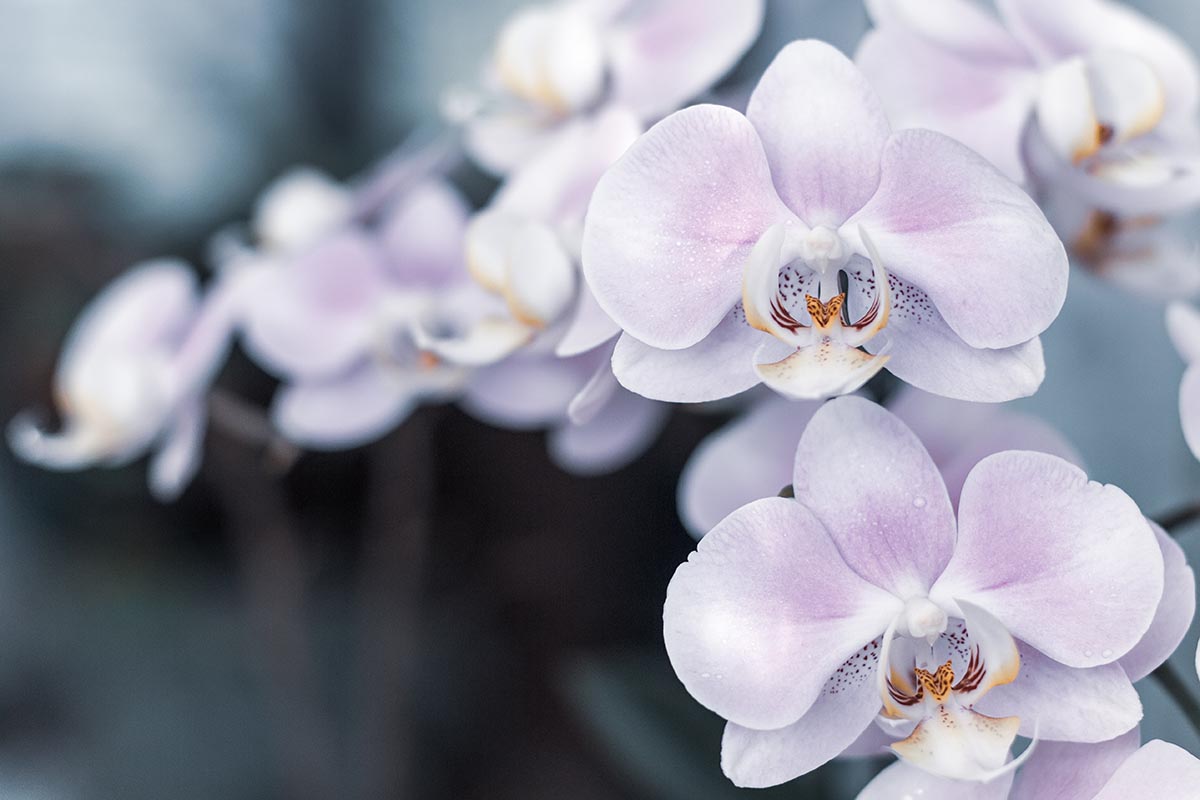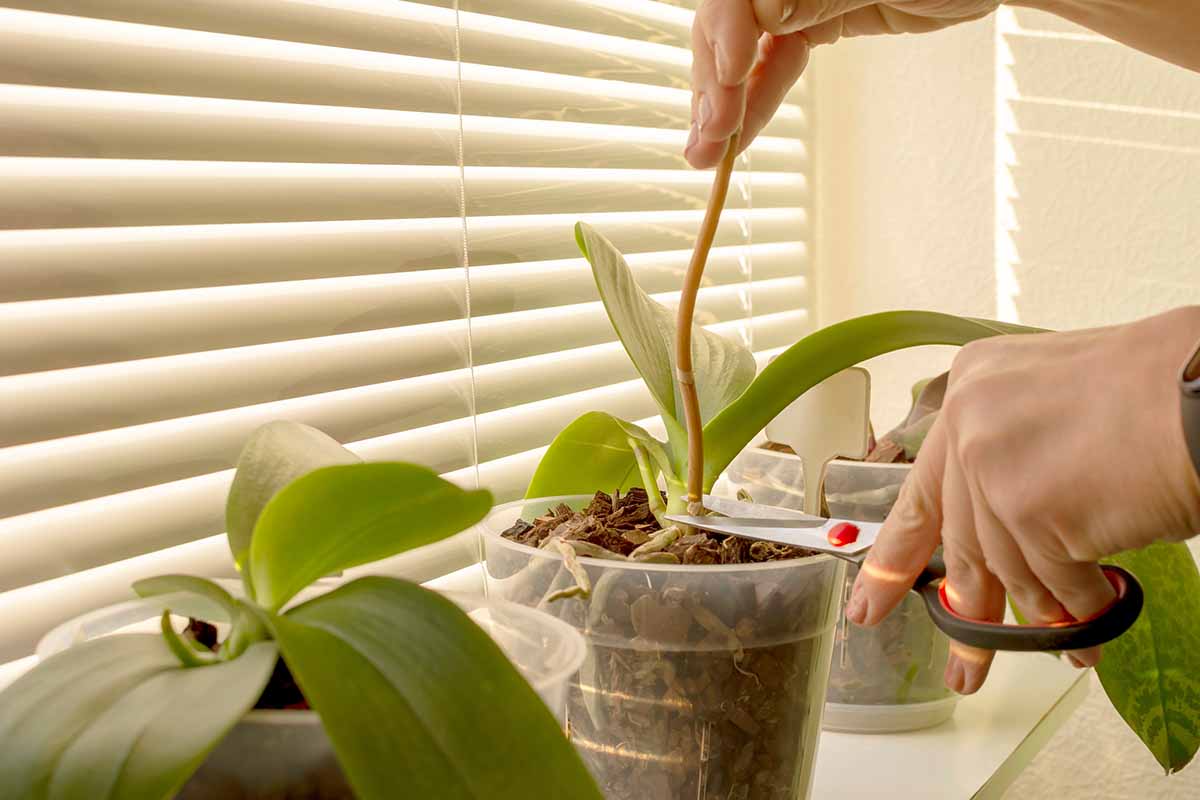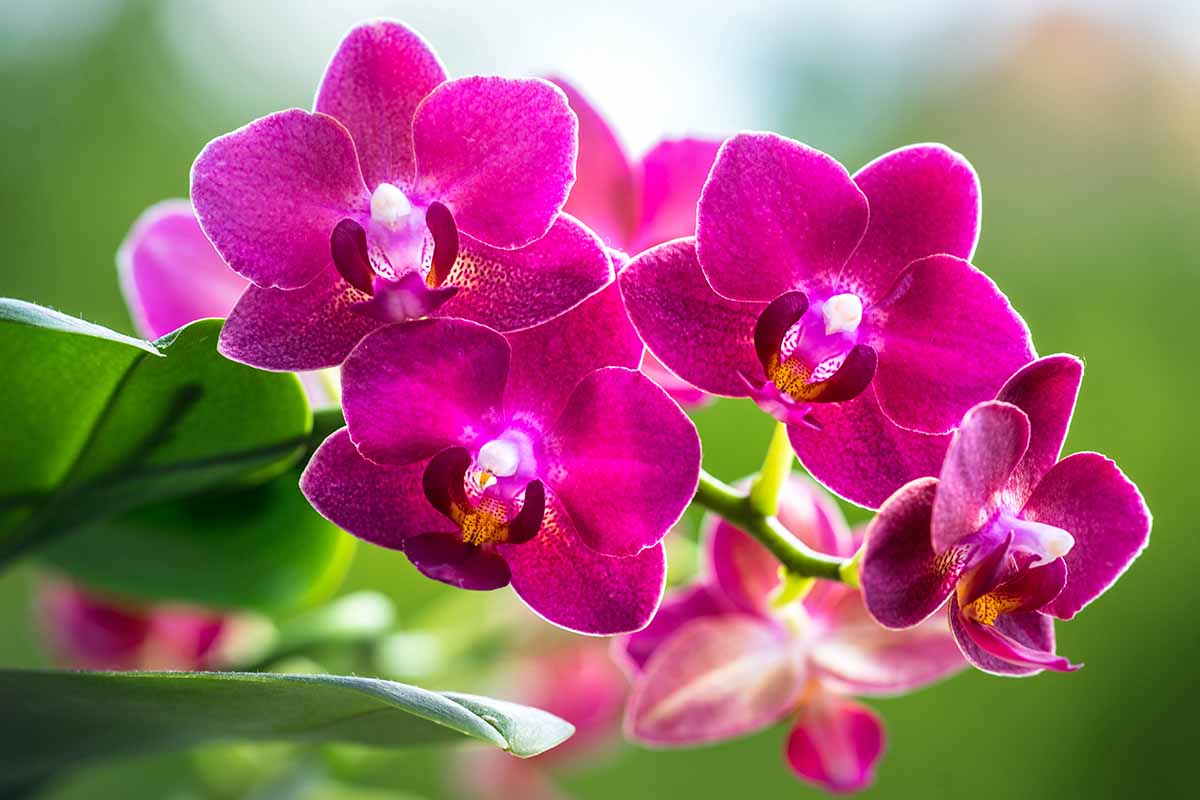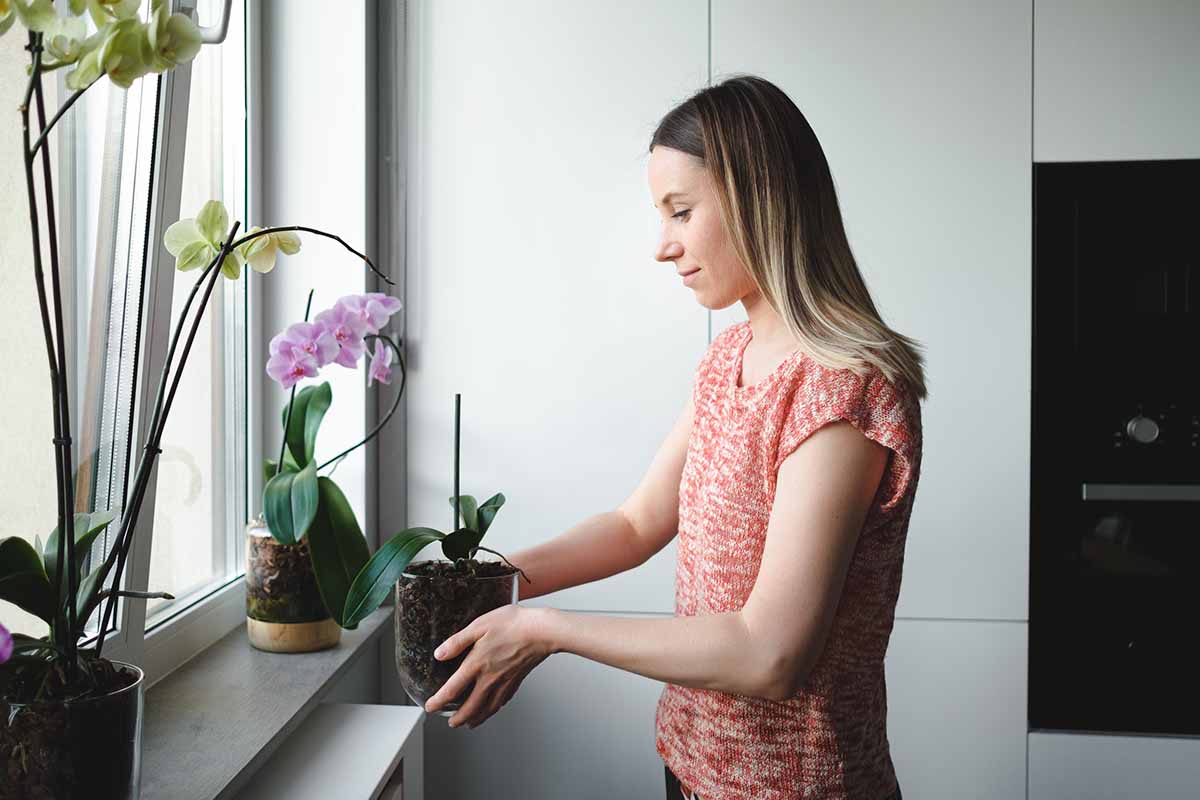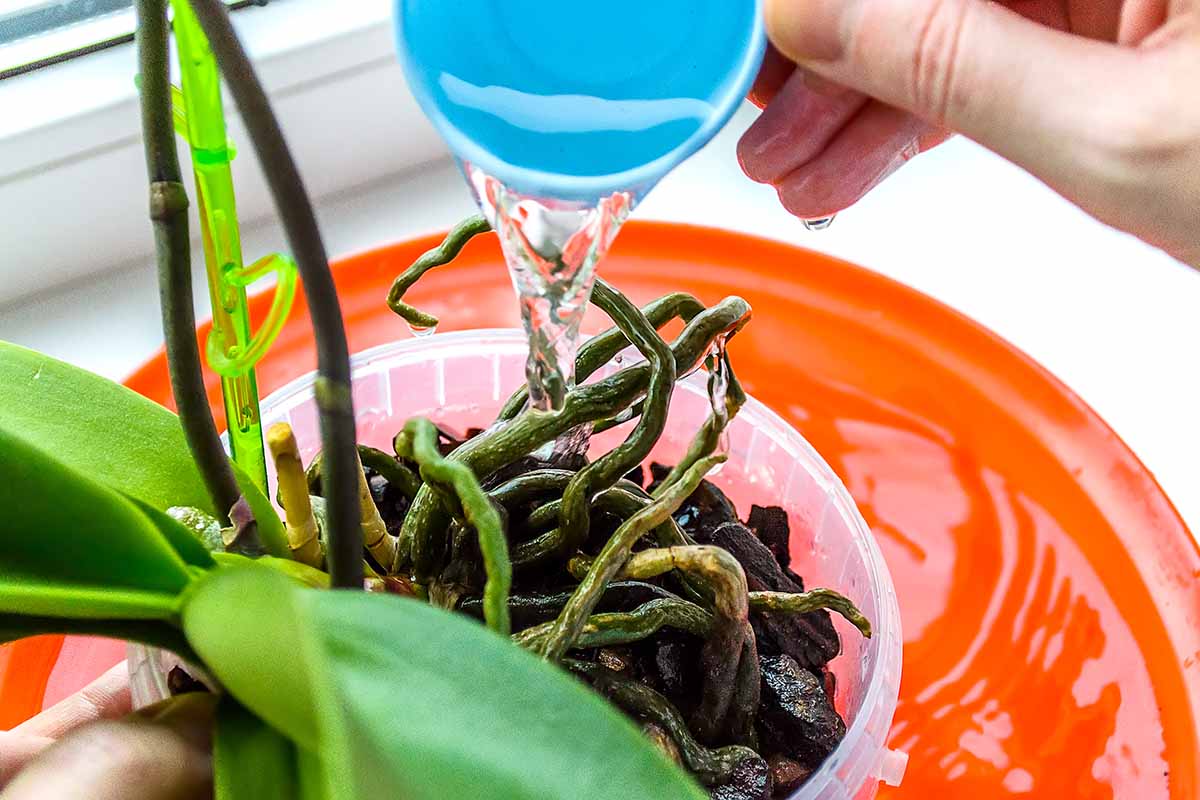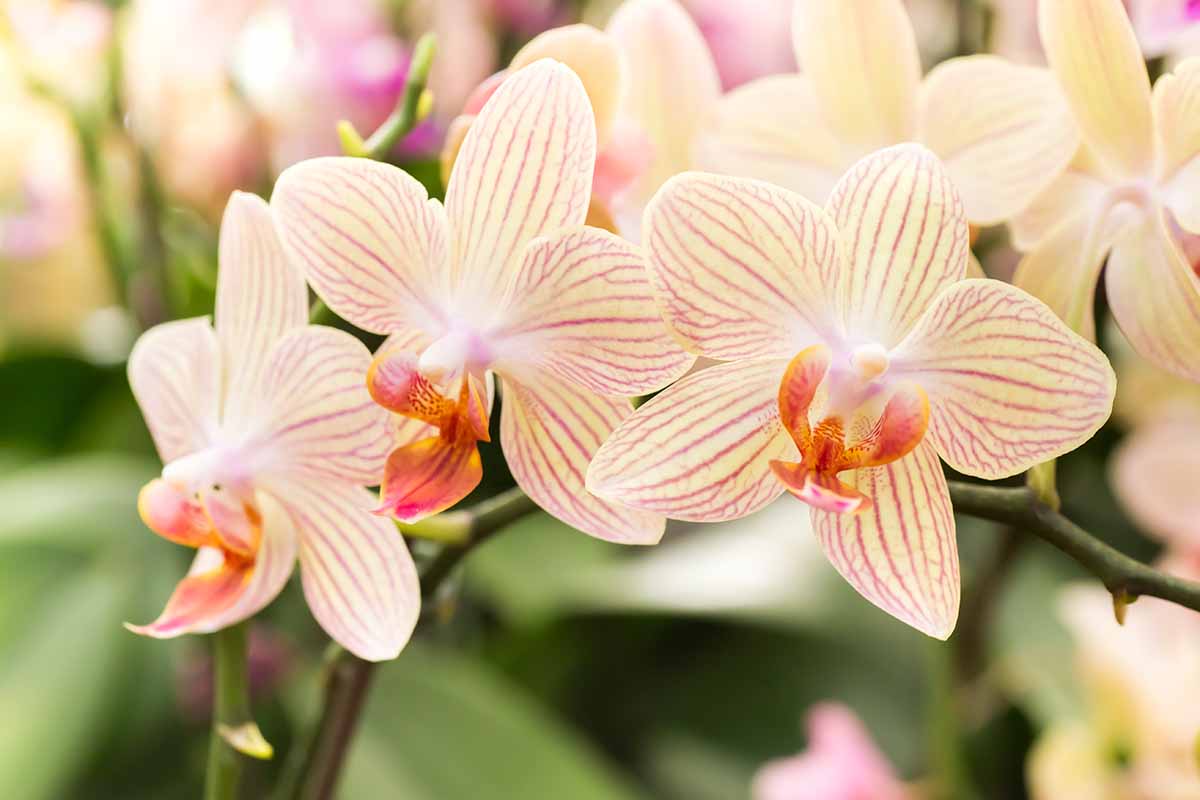When we grow them as houseplants, orchids generally bloom for a few weeks or months and then they drop the flowers and they won’t bloom again. Or at least, they won’t bloom again unless you know what the plant needs to convince it to send out new flowers. We link to vendors to help you find relevant products. If you buy from one of our links, we may earn a commission. But what may be perfect for most houseplants to thrive doesn’t give an orchid the signal it needs to leave dormancy and bloom again. It doesn’t take too much to change that, though. Just a little shift in the environment can trigger your plant to blossom more beautifully than ever before. We’ll help you make that happen! Ready to see your plant produce more beautiful blossoms to gaze upon and enjoy? In this guide, we’re going to discuss the following: Imagine all the cash you’re going to save when you don’t have to keep buying new orchid plants! Ready? Let’s begin.
General Orchid Care
Before we dive into the details, you need to make sure you’re providing your plant with the right care. An unhealthy orchid is never going to rebloom, no matter what else you try. For a full rundown on how to care for orchids, check out our guide. Here’s a quick overview: Most species need bright, indirect sunlight. An east-, west-, or south-facing window covered in a sheer curtain would be ideal. Too much sun and the leaves will turn black at the tips. Too little sun and growth will stop. If you do keep your plant by a window, note whether it gets chilly there. In cold climates, it can be downright cold next to a single-pane window, particularly at night when the sun isn’t shining. Most orchids thrive in temperatures between 60 and 85°F (15.5 and 29.5°C). Anything less than that and your plant’s in trouble. Orchids like lots of water, but absolutely no standing water is allowed. That’s why most of them come in those pots with lots of holes or slits in the bottom and sides to let the water drip out. Maybe yours is doubled up inside a cachepot and you haven’t noticed this – I’ll give you a second to go and check. When you water, make sure to let it drip for at least 10 minutes so there’s no standing water left. Wait to let it drain before placing it back inside a decorative cachepot, if you have one. Or skip the pot without drainage holes altogether. Black or mushy roots are a sure sign that you’re overwatering or leaving standing water behind. Assuming you have all this covered, your plant will still naturally enter a dormancy period when it doesn’t bloom. This can last anywhere from six to nine months. Once your plant enters this dormancy phase, it’s time to act. Here are the steps to take to ensure you’ll see new blossoms when the time is right.
Cut That Spike
Once the flower spike has completely dropped all of its blossoms, it’s probably time to get rid of it. Most orchids bloom on new spikes, so the old ones are serving no purpose. Use a clean pair of scissors to snip it off close to the base. Because the spikes usually grow from between the leaves, it can be a little hard to reach the base. Just do your best and try to leave no more than a few inches of spike behind.
Feed It
Now that your plant is dormant, it’s working on building up its nutrient stores so that it can send out flowers again. Help it out by providing a balanced houseplant fertilizer once per week or every other week, depending on the strength.
Lower the Temperature
Remember, orchids like it warm. But in order to encourage them to blossom once again, you want to convince them that they’re going through a chillier dormant period before returning to the typical, cozier conditions. It’s made from recycled food scraps and is mild enough that you can use it weekly. Dr. Earth Pump and Grow Plant Food If that sounds good to you, grab yourself a bottle at Arbico Organics. If you decide to go with something a bit stronger, like a 20-20-20 NPK fertilizer, only feed your orchid once a month, or dilute it with three parts water to one part fertilizer and feed once a week. Stop feeding once you see a new flower stalk starting to grow. One way to do that is to reduce the temperature of the area that they’re growing in. Some species need temps about 15 degrees cooler during the night to trigger blooming, while others just need to be cooler overall. Wait until at least one new leaf has developed on your plant since you removed the flower spike. This leaf might be larger than the others, or it might not. A larger leaf is usually a good sign of robust health. A small leaf might signal that conditions aren’t quite right, and your plant needs more food or better light before it will be ready to bloom again. Once you have your new leaf, try moving your orchid to a spot that drops to temperatures as low as 55°F (just under 13°C) at night. This could be in a well-lit basement, a garage for those in warmer climates, or just closer to a window than where you had it before. Cymbidium species are good candidates for this method. For those plants that need cool nights and warm days, you’ll need to move the plant somewhere warmer during the day. This is best for Phalaenopsis, Cattleya, and Paphiopedilum orchids. Just because it’s colder doesn’t mean you want it to be darker, however. Make sure the plant is still receiving the right amount of light. Most orchids need bright, indirect sun for at least six hours per day. Leave your orchid in its new spot or move it back and forth until you start to see a flower spike growing. That’s when you can move it back to your preferred spot. This will take around a month or two, depending on the species. If nothing happens after a few months, try shifting locations. You might need to choose an area that is a bit cooler, or maybe one with more sun.
Water Well
Don’t overwater your orchid, especially when it’s dormant. Your plant isn’t taking in as much moisture during this time as it did when it was actively growing, plus it tends to be cooler at times coinciding with orchid dormancy in most areas. That means less evaporation. You will need to reduce the amount of water you’re providing to encourage blooming. How much water you provide depends on the species, but you generally want to err on the side of too little water. If you touch the medium and it feels moist, don’t water. Wait just until the surface dries out. Once that flower spike pops up, return to your normal watering schedule.
Sweet Success
Once your new flower spike appears, move the plant back to its usual location and resume your normal care schedule. As soon as the flower spike is a few inches long, put a stake in place and attach the spike loosely to the stake with twist ties, twine, clips, or gardening tape. Depending on how healthy it is, once your orchid begins to flower, it might keep blooming for months and months. And if that’s the case, hooray – you did it! It’s really just a matter of providing proper care, and convincing it that it’s the right time to send out flowers. The right light, water, temperature, and food will get you there. How did you end up with a bloomless orchid? Did you inherit yours? Rescue it from a friend who was going to toss it out? Or did you just buy one and are struggling to help it make a comeback? Share with us in the comments. Hopefully, you’ll be sitting back and enjoying your flowers soon. If you felt like this guide helped to make that happen, we have some other guides to houseplant growing that might spark your interest, including:
23 Colorful Houseplants to Warm Up Your Home this WinterHouseplant Primer: A Guide to Basic Care and Durable Plants9 of the Best Watering Cans for Houseplant Care
